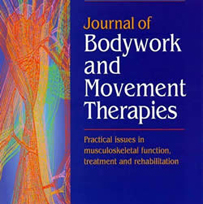Introduction
Continuing the theme of governance and recognition of Pilates, the following abstract features research compiled by Moira S. Lewitt, Lesley McPherson and Marisa Stevenson.
The aim of their research was to explore the meanings of the terms Classical, Contemporary and Pilates expert used amongst Pilates teachers today, and to explore the views on the scope of practice in order to create a framework that can be used by all professionals in describing this area within the physical activity and health contexts. Such a framework might also be useful to underpin approaches to formal professional recognition.
The survey which informed the research was administered by our sister organisation in the UK, The Pilates Teacher Association, and was shared with PAA members in October 2016, for their input.
If you completed the survey you may have a special interest in the results!
Have you signed up for your free subscription to the Journal of Bodywork and Movement Therapy yet?
Full members with an active PAA membership have a subscription to JBMT included in your membership (lists are updated quarterly). Follow this link for instructions on how to access your complimentary subscription to the Journal: JBMT registration instructions

Development of a Pilates Teaching Framework from an International Survey of Teacher Practice
Authors: Moira S. Lewitt, Lesley McPherson, Marisa Stevenson
Published online: February 7, 2019
Abstract
Objective
Pilates is used increasingly in a variety of clinical settings. However, there is lack of clarity in the literature as to what is meant by the term. Teachers incorporating apparatus based on the designs of Joseph Pilates (1883-1967) into their practice refer to themselves as Comprehensive Teachers, and this group divides itself further into Classical and Contemporary practice. The aim of this research was to explore the meanings of these terms with Comprehensive Teachers and to develop a framework that reflects current views and practice.
Method
Online international survey of Pilates Teachers through closed Facebook forums. Open questions were used to elicit views of the definition and practice of Pilates, and how standards should be set across the sector.
Results
Of 109 participants, 35% were based in the UK and 32% in the USA; 48% identified as Classical teachers, 32% as Contemporary, 5% as both and 15% as Matwork instructors. A thematic analysis of the qualitative data revealed agreement on the scope and content of Classical and Contemporary Comprehensive Pilates, however the discourse indicated there might be stereotyping about each other’s practice. Classical teachers, for example, spoke of their own practice as authentic while Comprehensive teachers used terms such as strict and inflexible for Classical practice. However, members of either group may incorporate both Classical and Contemporary approaches within their practice. We have designed a Pilates Teaching Framework to take into account the types of apparatus, the types of exercises and the order in which the exercises are executed.
Conclusions
A framework that emphasises Pilates teaching rather than teacher practice is proposed for consistency and clarity when describing Pilates in professional and public contexts.

Comments are closed.